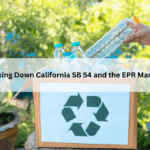On 30th Jun 2021, US EPA announced an important policy change under TSCA. These changes are surrounding risk evaluation by the previous administration and the path forward for the 10 chemicals to undergo risk evaluation. The changes include revisiting the assumption of PPE, changes in consideration of exposure pathway, and revisiting the assessments for determining unreasonable risk for the whole chemical.
EPA plans to reopen the risk evaluation of 1,4-dioxane and further examine methylene chloride, trichloroethylene, carbon tetrachloride, perchloroethylene, NMP, and 1-bromopropane. In continuation, EPA will develop a screening-level approach to assess ambient air and surface water fenceline, to identify potential unreasonable risks to fenceline communities associated with air and water exposures.
Way forward, EPA will make this information available for public comments and will be reviewed by the Scientific Advisory Committee on Chemicals.
Whole Chemical Approach
EPA has reviewed the risk evaluations issued for HBCD, PV29, and asbestos (part 1: chrysotile asbestos) in continuation to determine risks associated with PPE and include a whole chemical risk determination for these three chemicals.
Read more on the EPA website: EPA Announces Path Forward for TSCA Chemical Risk Evaluations





